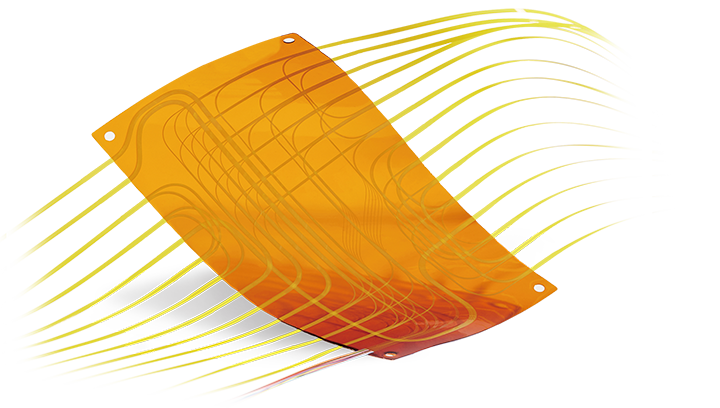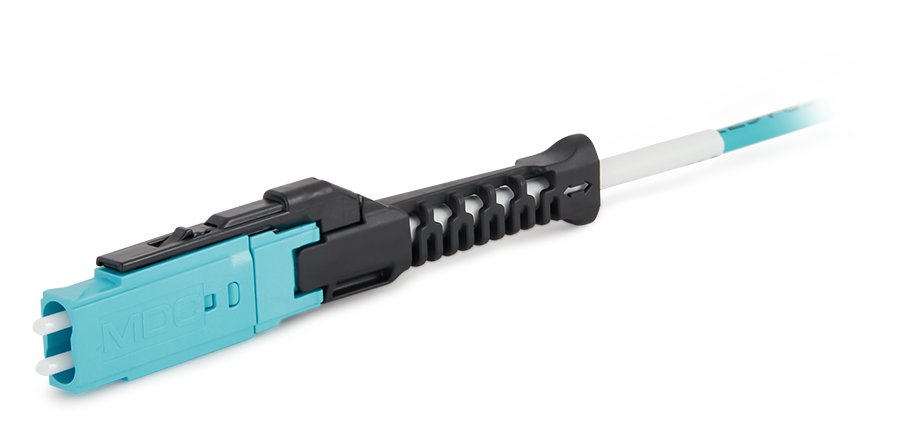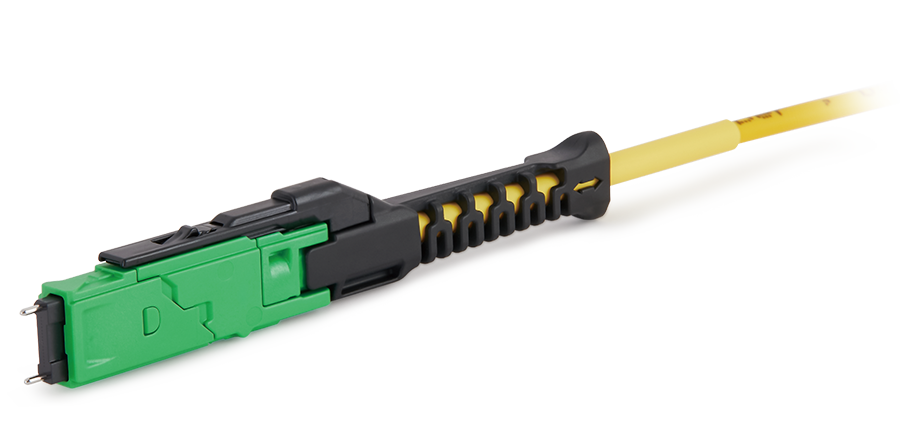With the rapid development of big data and cloud services, many enterprises are building their own data centers to meet the needs of their network business. The pre-terminated fiber cabling solution is currently considered an ideal solution to achieve high-density cabling in data centers. This tutorial will detail the pre-terminated cabling solutions for the Main Distribution Area (MDA), Horizontal Distribution Area (HDA), and Equipment Distribution Area (EDA) in data centers.
Main Distribution Area (MDA), Horizontal Distribution Area (HDA), and Equipment Distribution Area (EDA) in data Centers
A data center is mainly composed of the Main Distribution Area (MDA), Horizontal Distribution Area (HDA), and Equipment Distribution Area (EDA), as well as an Access Area and Zone Distribution Area (ZDA), etc. The specific situation of each area is shown in the following figure:

Number | Name | Details |
1 | Main Distribution Area (MDA) | The MDA only holds core devices such as routers, LAN/storage area network switches, dedicated small switches, and multiplexers. |
2 | Horizontal Distribution Area (HDA) | The HDA holds aggregation layer devices such as LAN/storage area network switches. |
3 | Equipment Distribution Area (EDA) | The EDA holds access layer devices such as LAN/storage area network switches and servers. |
4 | Zone Distribution Area (ZDA) | The ZDA is where the access or temporary access points are located. |
5 | Access Area | The access area is where the operator circuit and demarcation equipment are located. |
Cabling between the Main Distribution Area (MDA), Horizontal Distribution Area (HDA), and Equipment Distribution Area (EDA)
According to the TIA-942 standard, the basic network topology of a data center includes an access area, one or more telecommunications areas, a Main Distribution Area (MDA), and multiple Horizontal Distribution Areas (HDA) and Equipment Distribution Areas (EDA). From the network topology in the following figure, it can be seen that the cabling between the MDA, HDA, and EDA mainly consists of backbone cabling and horizontal cabling, where the backbone cabling is between the MDA and HDA, and the horizontal cabling is between the HDA and EDA.

Note: In addition to the basic network topology shown in the figure, administrators can also use distributed network topology, simplified network topology, etc., according to specific circumstances in the data center.
Backbone Cabling
The backbone cabling is primarily used to realize interconnection between the access area, Main Distribution Area (MDA), and Horizontal Distribution Area (HDA). Optical cables are commonly used transmission media for backbone cabling, but sometimes copper cables can also be used for short-distance interconnection. It consists of backbone cables, intermediate cross-connections and main cross-connections, mechanical termination connections, and soft cables or jumpers used by main cross-connections. Generally, the backbone cabling should be able to serve building users for one or more planning cycles, with each planning cycle being 3-10 years.
The cable length requirements for backbone cabling are as follows:
The maximum length of 100 Ohm voice-grade unshielded twisted-pair cable is 800m;
The maximum length of 150 Ohm data-grade shielded twisted-pair cable is 90m;
The maximum length of 62.5/125μm multimode fiber optic cable is 2000m;
The length of jumpers is 3-6m.
Horizontal Cabling
The horizontal cabling is primarily used to realize interconnection between the Horizontal Distribution Area (HDA), Zone Distribution Area (ZDA), and Equipment Distribution Area (EDA). Both optical cables such as active optical cables and copper cables can be used as transmission media for horizontal cabling. The horizontal cabling subsystem refers to the cable part that connects the communication intermediate cross-connect devices of the management subsystem from the information points of the work area subsystem, and can be installed on walls, in ceilings, under floors, and in pipes.
The length requirements for horizontal cabling are as follows:
The total length should not exceed 100m;
The length of information link is less than 3m;
The length of jumper is less than 6m;
The total length of jumpers on the patch panel and cables to the work area should not exceed 90m.

Pre-terminated cabling solutions for the Main Distribution Area (MDA), Horizontal Distribution Area (HDA), and Equipment Distribution Area (EDA)
The main advantages of pre-terminated fiber optic cable are that they can quickly implement cabling and upgrades in data centers, including pre-terminated cable products, distribution boxes, and patch panels, etc., which can well meet the strict requirements of data center performance, flexibility, and scalability. The following figure shows the basic pre-terminated cabling solutions for the Main Distribution Area (MDA), Horizontal Distribution Area (HDA), and Equipment Distribution Area (EDA):


 Fiber Optic Flex Circuit (FOFC)
Advanced Simulation & Optimization, High Positioning Accuracy, Flexible Customization, Rigorous Reliability Testing
Fiber Optic Flex Circuit (FOFC)
Advanced Simulation & Optimization, High Positioning Accuracy, Flexible Customization, Rigorous Reliability Testing MDC Solution
US Conec's MDC connector is a Very Small Form Factor (VSFF) duplex optical connector, expertly designed for terminating single-mode and multimode fiber cables with diameters up to 2.0mm.
MDC Solution
US Conec's MDC connector is a Very Small Form Factor (VSFF) duplex optical connector, expertly designed for terminating single-mode and multimode fiber cables with diameters up to 2.0mm. MMC Solution
US Conec's Very Small Form Factor (VSFF) multi-fiber optical connector that redefines high-density connectivity with its cutting-edge TMT ferrule technology and intuitive Direct-Conec™ push-pull boot design.
MMC Solution
US Conec's Very Small Form Factor (VSFF) multi-fiber optical connector that redefines high-density connectivity with its cutting-edge TMT ferrule technology and intuitive Direct-Conec™ push-pull boot design. EN
EN
 jp
jp  fr
fr  es
es  it
it  ru
ru  pt
pt  ar
ar  el
el  nl
nl 







_and_High-Reflection_(HR)_Optical_Coatings.webp)
